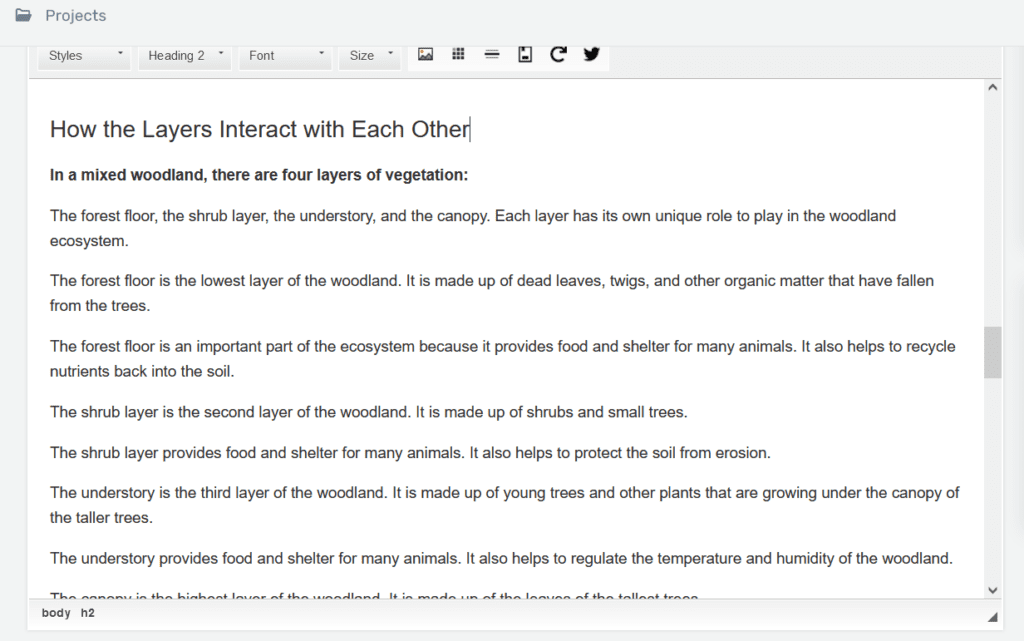Content at Scale: A Writer’s Review
I’m a writer: I’ve written 7 traditionally-published books and more blog posts for my own sites and clients than I can recall. I regularly churn out thousands of words a month, and I never thought AI would be able to do what I can do.
Then I found Content at Scale.
Table of Contents
I’ll be honest: while it’s a brilliant AI platform for copywriters, Content at Scale doesn’t do what I do. I’ll tell you now that I do have to edit the content it creates. But the benefit of starting from the good bones of a draft – that’s definitely worth it.
I’ve used Jasper in the past and didn’t get on with it. It has such a steep learning curve I literally didn’t know how to make it work and I didn’t have the time to figure it out. It was faster to write from scratch.
I have Frase, and I’m not blown away by that either. It’s good for some things, but the AI features are not what I use.
But Content at Scale is in a different league. I’ve given it a thorough test over a couple of weeks so I feel like I can give you an honest review of what works and what doesn’t.
However, the takeaway is that I love it (and it has convinced me that copywriters have a worrying few years ahead) and I recommend you try it out yourself.
What does Content at Scale do?
Content at Scale is an AI writing tool that specialises in long-form content. You add in a long-tail keyword and out pops a long, structured, marked up article.
Unlike the other AI writing tools that I have tried or seen, it produces articles that are around 1,500 words, which is perfect for most blog posts and my needs. We can always make them longer if necessary through the editing process.
Why is Content at Scale different?
It’s different because it uses several inputs instead of relying on GPT-3 alone. It integrates two natural language algorithms as well, and I wouldn’t be surprised if the team behind it didn’t continue to innovate to get the best outcome.
That difference in input makes a huge difference in output. It really sounds like a human voice.
The second difference is in the pricing model. You get credits for a set number of articles per month. If you don’t like the output, you can re-run it without using up another credit. Other tools tend to work on a per-word basis. I span up a few paragraphs through Frase as a comparison and it’s scary how quickly those word-based credits go down!
Who would use Content at Scale
I was cold-pitched Content at Scale and I don’t usually go for that kind of email. I do not consider myself to be in the market for writing tools. I’m a native English speaker who can touch type and I have two degrees in English literature, so I wouldn’t say I was the target audience.
But I do love shiny software for blogging and I don’t have much time.
That’s the killer point: the time saving.
I am BUSY.
Anything that helps me get a headstart on the things I know I should be doing and the things I love doing has to be a good thing, right?
I think the target audience for Content at Scale is:
- Bloggers who want to create more content but who don’t have time to learn a new tool (there is virtually no learning curve).
- Website owners who know they need to rank for keywords but don’t have the budget to outsource content writing to freelancers yet.
- Content writers who need a bit of help getting started as Content at Scale can give them a full outline with a single click.
- Agencies who want to increase their output.
I almost don’t want to tell anyone about this tool because if AI writing takes off in a big way, who would need a human writer?
That’s where we get to the disadvantages of the tool, so let’s me share my experience.
Disadvantages of Content at Scale
I know it’s traditional in reviews to do the advantages first, but let me get this out the way!
The main disadvantage of the tool is that it isn’t human. I know that seems silly to say but it doesn’t have the ability to add human stories, because it has no lived experience from which to draw from.
I tend to share stories in my articles because it makes them relatable and provides case studies, anecdotes and evidence that I know what I’m talking about! In SEO terms, stories, experience and stats add credibility.
I didn’t find that Content at Scale could add these, and to be honest I wasn’t expecting it to. I am happy to go in and add anecdotes and personal experience later to flesh out the article.
The second disadvantage is repetition.
The worst article I have got from CaS is about the layers of a woodland (keyword: woodland layers). You can see from the screenshots that the two sections with different headings are so similar that I wouldn’t be able to use them both. It doesn’t make sense to have the same content repeated with slightly different words.
However, maybe there genuinely isn’t that much to say about woodland layers. I can easily merge the sections together to create a single section that covers it all.
It’s not the first article that has had repeating sentences/themes in, but this is definitely the worst.
On the other hand, the first forest school article I created with Content at Scale was almost perfect by itself. I think the quality of output really does depend on the keyword, and you can re-run the article if you aren’t happy with it.
The third disadvantage is cost. It is cheaper than a human copywriter and editor combo. But it is expensive and there is no free trial. The tech behind it is expensive to run and the team has to cover their costs.
Given that you might be able to cut other costs in the content creation process, perhaps it will pay for itself in your business model.
OK, so that’s the downsides. Onwards to the good bits!
What I liked about the tool
Here are the top things I loved about Content at Scale:
- It’s easy to use. This was huge for me. I don’t have the capacity to learn something new.
- You only have to put in the keyword and an optional brief descriptive sentence about what you want.
- You get back a long article, easily long enough to use as a blog post.
- It links to WordPress.
- It automatically writes your meta description!
- It includes an SEO-focused ranking checklist.
- The support is awesome.
Keyword mastery
I have a lot of keywords, partly because when I signed up for Content at Scale I got a bonus where the team created 300 keywords for my niche. (You can get that too if you sign up with my affiliate link.)
I also spent some time a while back creating a huge list of keywords, and two years ago I spent a lot of money on an SEO consultant to do keyword research and site optimization for me. And then I only implemented a handful of the recommendations. Sigh.
Anyway, the upshot is that I have more content to create than time to do it.
I love that I can upload a .csv file of keywords or a single keyword at a time. With one keyphrase, you get back an article.
Then give it a polish, and it’s ready to go.
SEO-focused help
The polishing aspect of Content at Scale is in the form of a checklist. You get a set of words that should be included in the article to help it rank.
There is also an on-page checklist that covers things like title length, meta description content and length, subheadings and so on.
Support
I have rarely had such good support. They answer questions almost instantly, even when they are advertised as away. I raised a bug with them and 5 minutes later it was fixed. (I do think they were aware of it beforehand though!)
I’ve been impressed with the support.
Collaboration features
CaS links to WordPress so you can push articles, meta descriptions and featured images directly into your content management system.
That’s a time-saver, but I haven’t got that set up. I like to have a backup copy of every article in Word, so I use the export button and export to Word instead, then I create the article manually in WordPress.
Having accidentally deleted my whole website, I know the importance of having back up copies independent of other software tools.
You can also add notes to each draft article, so if a colleague is reviewing it, you can keep each other updated as it moves through the workflow.
Content at Scale discount
I am happy to be an affiliate for Content at Scale, and as you don’t often get a behind the scenes look at how I manage my blogs, hopefully this is interesting to share!
If you sign up with my link, you will get an extra 20% worth of credits. That’s a pretty good discount on your extra posts. I have the starter plan of 20 posts per month, and that’s fine for me at the moment. I don’t think I could take on more content review and editing. But 20% extra on that is still an extra 4 articles per month.
On top of that, for a limited time the team is offering a bonus of keyword research, so if you don’t know what you should be putting into the tool, they will literally tell you what to say.
I got back a spreadsheet of 300(ish) keywords split handily into 12 lists so I can upload one list per month. Genius.
Final thoughts
Content at Scale is still in beta, which presumably means it will get better and probably more expensive. What you write for your blog needs to be good but you probably do need to be creating more than you are now.
Wouldn’t it be helpful to have a tool that does most of the heavy lifting for you?
I’d recommend trying out Content at Scale now and seeing what it could do for you.


